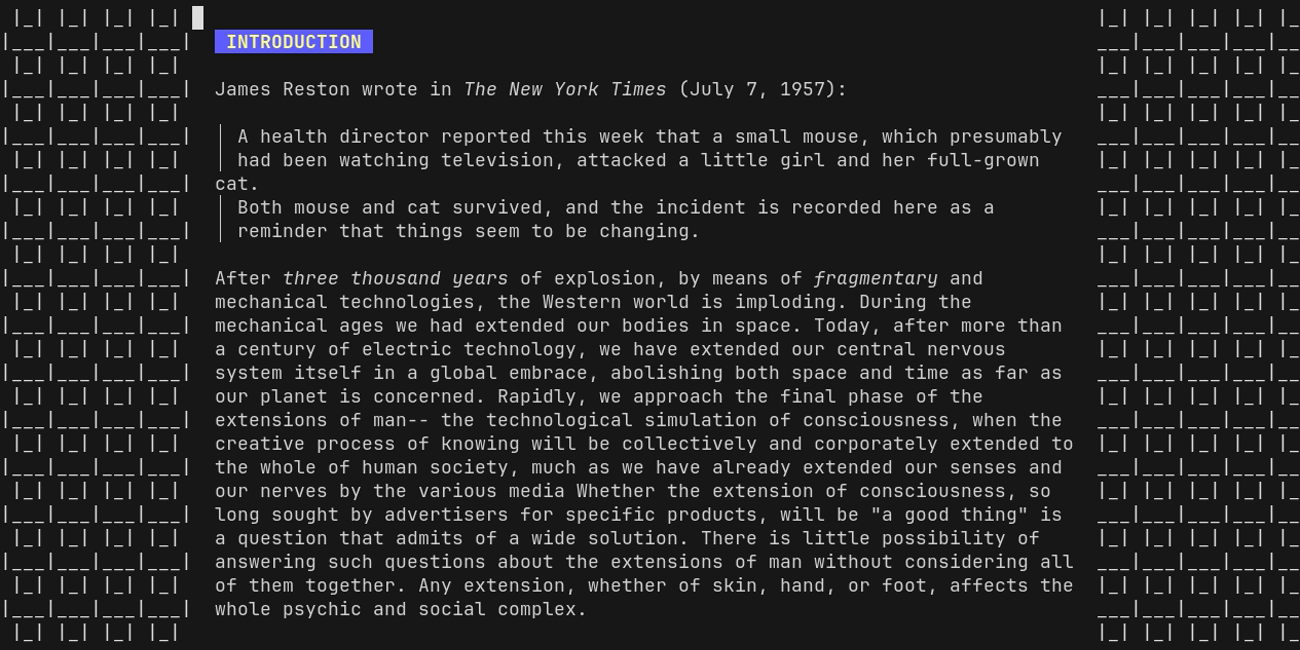Changing the layout
When you first connect, cy creates a new pane and attaches to it.
By default, cy centers the pane and fills the rest of the horizontal space with a patterned background it calls the frame. If your terminal is smaller than the minimum number of columns (80 by default), cy will not show a background.

cy refers to the configuration of the content shown on your screen as the layout. Unlike tmux, every client on the cy server has their own layout that can be configured independently of other clients. In other words, only panes are shared between clients, their presentation is not.
The layout shown above has a single pane that has its horizontal size fixed to 80 columns.
Panes and splits
cy's has pane and split functionality that should feel familiar to users of tmux. Like other terminal multiplexers, in cy you can divide your screen up into any number of panes. This can be done with ctrl+a - [?] to split the current pane along a horizontal line and ctrl+a | [?] to split along a vertical one.
After creating a few, you can move between them using directional keys:
- ctrl+a K [?] or ctrl+a up [?] to move up
- ctrl+a J [?] or ctrl+a down [?] to move down
- ctrl+a H [?] or ctrl+a left [?] to move left
- ctrl+a L [?] or ctrl+a right [?] to move right
Tabs
cy also has tabs:
- ctrl+a t [?] to create a new tab
- ctrl+a R [?] to rename the current tab
- ctrl+a tab [?] to move to the next tab
- ctrl+a shift+tab [?] to move to the previous tab
- action/close-tab to close the current tab
Removing panes
You can visually remove panes from your layout with ctrl+a x [?]. However, it is important to note that unlike in other terminal multiplexers, removing a pane from your layout does not kill it; you can still attach to it again, such as by using ctrl+a ; [?]. In cy's lexicon, the pane is still in your node tree. To remove a pane both from the node tree and the layout, you can use ctrl+a X [?].
Margins
The outer margins can be adjusted or disabled with a few keybindings. Note that these will only have an effect if your terminal is wider than 80 columns and the margins are visible.